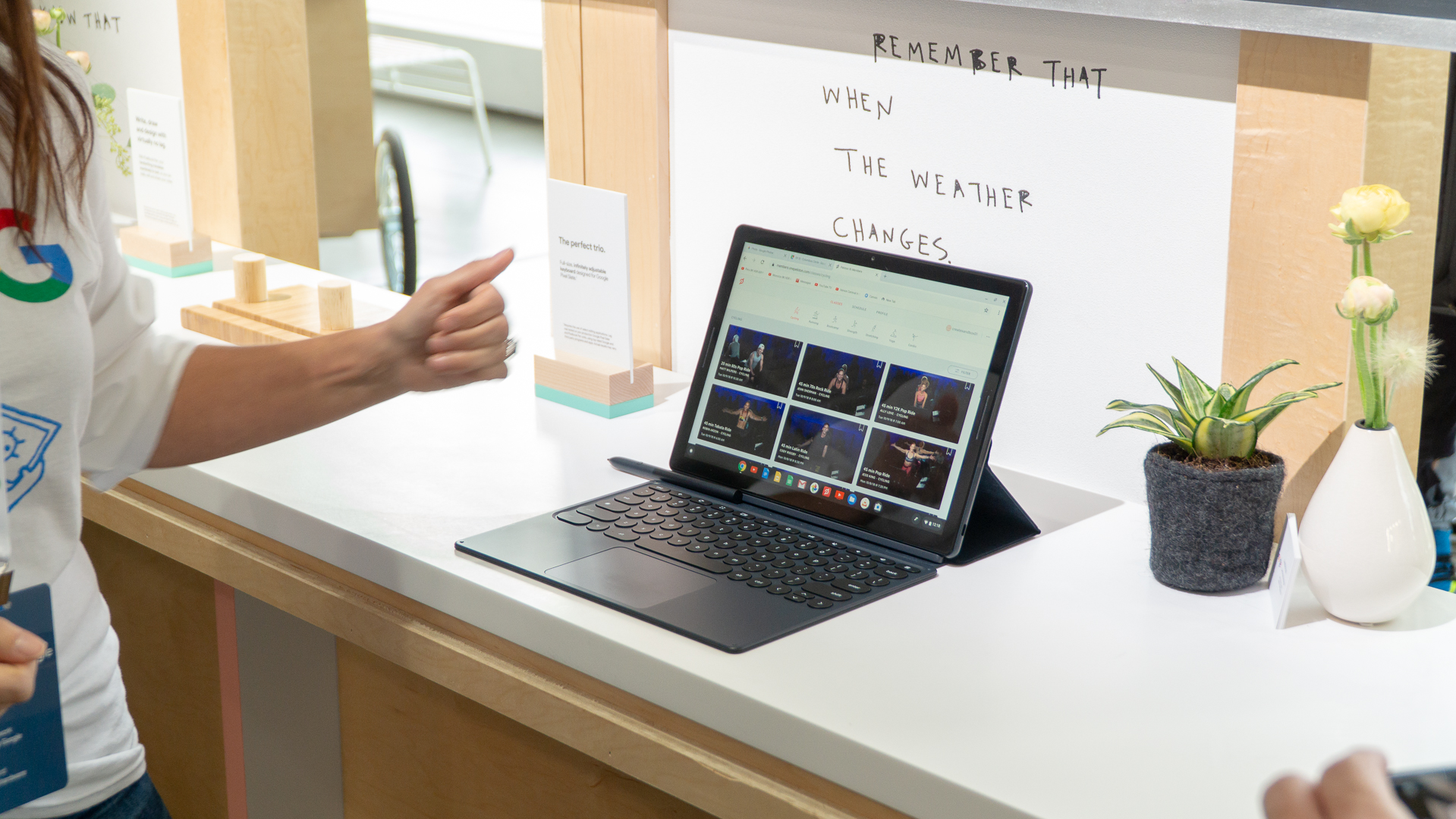Google Pixel Slate 2: what we want to see
How can Google’s tablet improve?

It’s too early to tell what the future has in store for Google’s ill-fated Pixel Slate, having only been released in November 2018. Google may not even release a Pixel Slate 2, following the negative feedback that is now – and possibly, forever – attached to it. Hey, maybe Google will launch a Pixelbook 2 instead.
Initially poised to compete with Microsoft’s Surface Pro and Apple’s iPad Pro, the Google Pixel Slate was a beautiful device that was cursed with substandard performance and software. It was also very expensive. Still, it’s a little too early to know anything about a Google Pixel Slate 2, assuming it hasn’t been canned.
One thing we do know is that, if Google does pursue a Pixel Slate 2 in the future, there are some serious changes necessary. So, we’re going to dive in to what we want to see from the Google Pixel Slate 2, as well as some speculation about the release date and price.
Cut to the chase
- What is it? Google’s next productivity tablet
- When is it out? October 2019 at the earliest
- What will it cost? Possibly starting around $599 (£549, AU$845)

Google Pixel Slate 2 release date
Since the original Google Pixel Slate was announced at the 2018 Made by Google event and officially released about six weeks later, it makes sense that Google would follow suit with the next generation.
Obviously, we don’t know how long it took for Google to design the original model, but if Google were to follow up this one with an annual release, we’d rather wait even longer for a better product.
However, it doesn’t seem likely that the Google Pixel Slate 2 will arrive alongside the Google Pixel 4. Google is reportedly moving talent out of its Google Create team, which is responsible for devices like the Pixelbook and Pixel Slate. If this is true, it could mean that the Google Pixel Slate 2 may be shelved for quite a while.
Still, this is all speculation, but we’ll update this page as soon as we find out more.
Sign up for breaking news, reviews, opinion, top tech deals, and more.

Google Pixel Slate 2 price
When we say that the Pixel Slate is pricey, we mean that it’s pricey specifically for a Chrome device with its level of hardware inside. Heck, it’s pricey for something that has been notorious for software issues.
Compared to the Surface Pro and the iPad Pro, the Pixel Slate is actually slightly cheaper, saving you $100 in the US, which you can put toward a Pixel Slate Keyboard. If Google kept the same prices and fixed its performance, consumers could be quite satisfied, especially with that stunning hardware design.
The original Pixel Slate starts at $599 (£549) with an Intel Celeron processor, a 4GB RAM and 32GB of storage space. It’s currently unavailable in Australia, but if Google decides to make Pixel Slate 2 available there and keep the same prices, it might start around AU$845.

What we want to see
The Google Pixel Slate isn’t all bad. As mentioned a few times, it’s an excellently designed tablet, a design we definitely want to see again on a Pixel Slate 2, only bigger and better. With that, we’d be happy to keep a similar design with much better software and hardware inside.
Same impressive hardware
With popping colors and Google’s Molecular Display tech that allows for high pixel density, the Pixel Slate’s gorgeous display is definitely one of its few redeeming qualities. So are its available ports, loud speakers and fingerprint reader housed in a smooth, matte aluminum finish. The tablet is also fairly lightweight at 721g, making it travel-friendly.
Of course, it won’t hurt to tweak the design in the next generation. The bezels could use a bit of trimming, facial biometric login would catch it up to the other ‘Pro’ tablets and the speakers could be much better as far as sound quality.
Better starting configuration
While the Pixel Slate’s starting configuration, at $599, was with an Intel Celeron processor, it doesn’t seem at all like you’re really saving money. Not when Microsoft Surface Pro 6’s starting config at $699 touts an Intel Core i5 and the iPad Pro’s A12X Bionic chip can easily go head-to-head with an Intel Core i7 much less a Celeron. It’s simply a raw deal.
A better processor in the Pixel Slate 2’s starting configuration – one closer in power to an Intel Core chip – is essential if Google wants to redeem this device in the eyes of consumers.
No more stuttering
While the Pixel Slate performs beautifully when web surfing and watching TV shows and movies, many have complained about uncanny stuttering when multitasking and split-screening apps or when playing some of the more demanding games.
Is it not enough that we’re already limited to what apps we can use with the Chrome OS? We have to deal with lag, too? This is something that definitely must be fixed with the second generation.
Optimization with Android apps and games
Speaking of apps, while the Chrome OS definitely supports Google Play and Android apps, the Pixel Slate has had many issues with many Android apps – from stretched out app layouts to the apps themselves all but falling apart because they aren’t optimized for Chrome.
We’d love to see Google work more closely with app designers to fix this constant and frankly inconvenient problem. Otherwise, why pay $600 or more for a device that we can only reliably surf the Internet and play movies?
Longer battery life
Not that the Pixel Slate’s battery life is bad, but it’s not good either. Google had promised 12 hours, but many tests have proved it to be less than that. This is par for the course, but it’s nevertheless something that needs improvement.
We’d definitely like to see Pixel Slate 2 offer longer battery life to compete with Surface Pro and iPad Pro, especially if Google is finally able to fix the main issues.
- These are the best tablets of today

Michelle Rae Uy is the former Computing Reviews and Buying Guides Editor at TechRadar. She's a Los Angeles-based tech, travel and lifestyle writer covering a wide range of topics, from computing to the latest in green commutes to the best hiking trails. She's an ambivert who enjoys communing with nature and traveling for months at a time just as much as watching movies and playing sim games at home. That also means that she has a lot more avenues to explore in terms of understanding how tech can improve the different aspects of our lives.